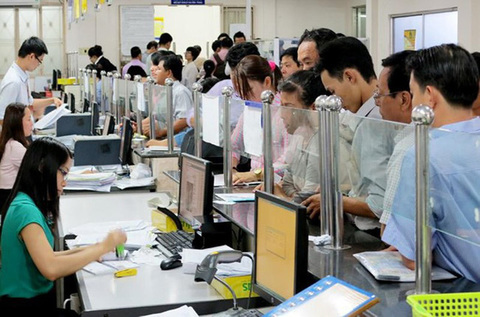GDP scale raised by 25.4% after reassessment
GDP scale raised by 25.4% after reassessment
Vietnam’s average gross domestic product (GDP) for the 2010-2017 period has been reassessed, taking into account all regular economic activities, placing the country’s GDP 25.4% higher than previously announced.

The General Statistics Office (GSO) said that a change in the GSO scale would lead to changes in other relevant economic indicators, such as asset accumulation, final consumption, gross national income, GDP per capita, the incremental capital-output ratio and total-factor productivity.
The reevaluation result has significantly hiked the total GDP value and GDP per capita, which will affect the orientation of further socioeconomic development, noted the GSO.
Also, the increase in the GDP per capita could lead to changes in household consumption patterns since living standards are poised to improve, or will soon be on a par with the levels of high middle-income countries.
The GSO stated that the reassessment would not have any impact on the GDP growth targets or the country’s strategy for socioeconomic development as economic growth rates in recent years have seen relatively minor changes.
However, it will result in changes to the structure of the economy, including hikes in the proportions of the industry, construction and services sectors and reductions in those of agriculture, forestry and fisheries.
Moreover, growth quality indicators will see improvements, but the changes will be insignificant. These include the proportions of State budget revenue, expenditure and deficit; taxes; and public, government and foreign debts – all compared with the GDP.
The change may result in the expansion of State budget revenues and tax collection as well as government spending and borrowing. However, their impact possibility is low since they are reliant on the collection of taxes, fees and more, in line with prevailing regulations.
Hikes in the GDP scale and the GDP per capita may raise Vietnam’s contributions to international organizations that the country has joined.
Evaluating public debt increases falls under the purview of the Government, ministries and economists, whereas statistics only provide a view of the economy, according to GSO General Director Nguyen Bich Lam at a recent press briefing in Hanoi.
Lam remarked that the reevaluation of the GDP’s scale is a regular task for statistics agencies worldwide.
The GSO’s reassessment follows the production approach, which is not a new method, he stressed.
This approach is also called the output approach; it measures GDP as the difference between the value of output less the value of goods and services used in producing the output during an accounting period.
The GSO head pointed out that the review and reevaluation of the GDP scale is based on the method recommended by the United Nations Statistics Division, which comes from sources that fully reflect the manufacturing and business performance of the economy, without changes in the calculation method.
The current calculation of Vietnam’s GDP is aligned with international practices, he added.
The Southeast Asian country has one of the region’s fastest-growing economies, with robust exports and foreign investment delivering average economic growth of 6.55% over the past five years.
Vietnam has been targeting an annual GDP growth rate of 6.5%-7% for the 2016-2020 period, and it grew by 7.08% last year, according to the International Monetary Fund, which had pegged the GDP at more than US$240 billion in 2018.
If the 2018 total is raised by 25.4%, the value of Vietnam’s economy would be over US$300 billion, significantly narrowing the gap between the country and the Philippines, Southeast Asia’s fifth-largest economy.
“The revision might be positive for foreign investment as Vietnam might become more attractive,” Vo Tri Thanh, a government economic advisor and director of the Hanoi-based Institute for Brand and Competitiveness Strategy, was quoted by Reuters as saying.
Thanh stated that Vietnam should proceed with caution as the GDP revision will lead to changes to many important indicators, such as the public debt ratio to GDP and the budget deficit ratio to GDP.
“A lower ratio of public debt to GDP doesn’t automatically mean that Vietnam can immediately borrow more now,” he said.
In its statement last month, the GSO claimed recent strong private sector growth had not been fully reflected in its statistical data and that experts at the International Monetary Fund and the United Nations were helping with the revision.





















